Blog
Tips for Tree Removal After a Hurricane
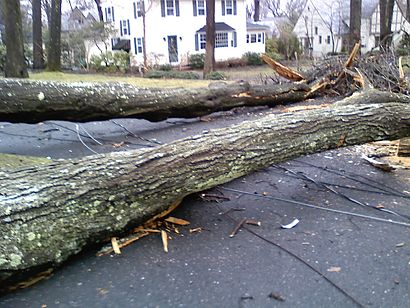 Hurricane Sandy left millions of people without power and homes. The devastation is still being assessed and everyone is working hard to resume life. One of the best ways to start the transition back to normalcy is to clean up your property.
Hurricane Sandy left millions of people without power and homes. The devastation is still being assessed and everyone is working hard to resume life. One of the best ways to start the transition back to normalcy is to clean up your property.
With hurricane wind speeds topping 90 mph in the state, thousands of New Jersey trees have been ripped out of the ground and tossed on their side. Massive trees are a major obstacle in post-hurricane cleanup.
If you’re interested in hiring us to help in your cleanup efforts, please contact us. In the meantime, here are some helpful tree removal tips.
Assess the fallen tree
Before embarking on any removal efforts, you should first fully assess the damage inflicted by the tree. If it landed on your property and car, it’s important that you first contact your insurance company to file a claim. Insurance companies will occasionally pay for removal if the damage is extensive. If the tree did not fall on anything, you will likely be responsible for cleaning it up.
Also be aware of electrical hazards. Any trees on top of electrical wires should not be touched. Notify your electric company immediately because the wires might still be live.
Determine the type of removal
Not all tree removals are the same. While some trees probably have been completely uprooted, others might be leaning to the side or have branches dangling. Small branches can easily be pruned, but larger branches should be handled by professionals. Post-hurricane trees can be volatile, so you should leave any potentially dangerous situations to professionals. Only consider doing something yourself if the tree is completely down.
Use proper equipment
For removing a downed tree, you will need a chain saw and safety gear, including gloves, a helmet, protective glasses, ear plugs and more. Remember to fully follow chain saw safety rules, which you can find here.
Work outwards in
The key to removing a fallen tree is to start with the outside branches. Cut the limbs and roots into smaller lengths, so you can remove them. You should be left with only the trunk once you’re done.
Cut up the trunk
Next you should cut up the trunk into manageable pieces, depending on how thick it is. You will also likely need someone to haul it away, so the size of the chunks will depend on that.
How to Tell If You Have Drainage Problems
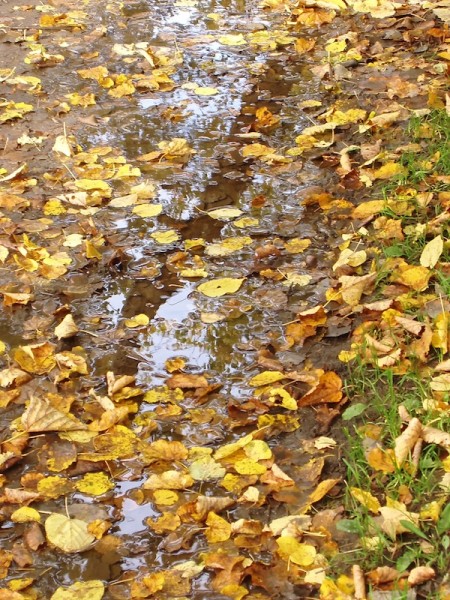 Rainy season is here in New Jersey with a good amount of wet weather scheduled to hit the state. While some enjoy the cool and wet weather, your property might not.
Rainy season is here in New Jersey with a good amount of wet weather scheduled to hit the state. While some enjoy the cool and wet weather, your property might not.
Drainage problems during spouts of rain can be really damaging to your property. Not only can it ruin the foundation of your house, but it can also cause plants to suffer from fungal diseases, interfere with septic systems and lead to many other unforeseen problems.
While you might think that the only indication of drainage issues is having a huge puddle in your yard for weeks, it’s possible that you’ve been silently suffering from bad drainage for years without knowing.
So here are a few ways you can detect whether you have drainage problems.
Puddles lasting more than a day
If puddles in your yard last longer than a few hours, it could be signs of a larger problem. Puddles are normal, especially after days of heavy rain. But puddles usually dissipate and drain in a few hours, so keep an eye out for persistent puddles.
Cracks in foundation
Cracks are a natural occurrence from movement and settling over the decades, but if you see some larger cracks in the foundation, it could spell trouble. This is a problem larger than drainage, which needs to be fixed immediately.
Water in basement
Another alarming sign of poor drainage is the appearance of water or water stains in your basement. It could be coming from the fact that your property slopes in the wrong direction, which means the water seeps into your basement.
Crust on the soil
Here’s more about this sign from Scotts:
“Another sign of poor drainage is a white or tan crust on the soil surface during dry weather. The crust is composed of soil salts that have been deposited as water migrated up to the surface, then evaporated. This migration to the surface only occurs when the water can’t drain downward.”
This crustiness comes from evaporation, meaning the water is not going down into the soil and being drained properly.
Soil runoff
If you’re noticing runoff of silt and dirt onto your driveways and walkways during a rainstorm, that’s another indicator. The water is flowing in the wrong direction and needs to be drained.
Check out our page on drainage services to learn more about what we offer.
Things to Start Thinking About for Christmas Decorations
It’s never too early to start thing about holiday decorations. Halloween is a little less than two weeks away, but after that, it’s just a straight shot to Christmas—with a stop for Thanksgiving, course. And here in New Jersey, having the biggest and best decorations on your house really brings your property to life.
So, if you’re already pondering what you want your house to look like during the holidays, here are some things you should start thinking about.

Do-It-Yourself or Paid Installers?
One of the fundamental questions of putting up Christmas lights is whether you want to do it yourself or hire someone to do it for you. There are pros and cons to each. For example, if you hire someone to do it for you, it will likely be more expensive. The positive side is that you don’t have to do the physical work and it comes out looking really professional.
If you do it yourself, you’ll save money, but you won’t save time. You have to plan everything yourself and go out and buy all the equipment. There’s also the risk of ending up with a sloppy-looking house.
In the end it’s a matter of preference, but hiring Christmas light installers will definitely make your life easier.
Think about a budget
Whether you’re doing it yourself or hiring professionals, you need to set a budget. It’s really easy to go overboard and spend thousands and thousands of dollars on these magnificent decorations for your house. You can avoid overspending by giving yourself a rigid price that you stick to.
Create a rough plan
The sooner you start thinking about what you want, the better. You can go simple with basic lights on the roof or you can go more complex—like lights that interact with music. Even if you’re having professionals come in and do the installation, you can give them your plan.
Also, since you have your budget set, you should let your finances dictate your direction. While you might want to get a huge, grandiose display, don’t go too far outside your budget.
How to Winterize Your In-ground Swimming Pool
With summer officially in the rear-view mirror, it’s time to get your pool ready for the long winter ahead. Your pool has likely been busy, but it won’t get any use the next few months.
So, we’ve made this guide to help you learn more about in-ground pool winterization.
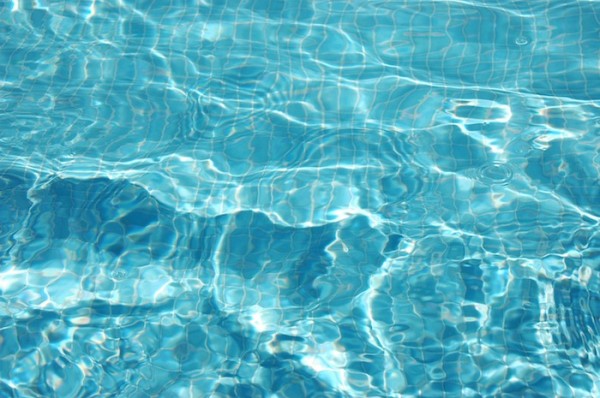
Why winterize?
If you just built your in-ground pool at the start of the season, you’ve never experienced the damage cold weather can do to your pool. An improperly prepared, or completely unprepared, pool can suffer serious damage. Pipes can crack from freezing and stains can develop on the bottom of the pool floor. Algae can also become prevalent in your pool, which makes it a hassle when you’re ready to jump in as the weather warms up.
How to do it
Before going through the steps, it’s important to note that this is meant for research purposes and is not an extensive rundown. If you are winterizing your pool, we recommend going to a reputable pool company to have it done professionally.
Clean away debris and check the chemical levels
Prepare your pool for winterization by thoroughly removing any debris or leaves from the bottle and top of the pool. If a leaf stays at the bottom, it could stain your pool. Also, make sure the pool’s chemicals are perfect.
Shock the pool
Shocking the pool means temporarily raising the chlorine levels to kill any bacteria. Do this a week or so before winterization, so chlorine levels can normalize.
Add winterizing mixture to the pool
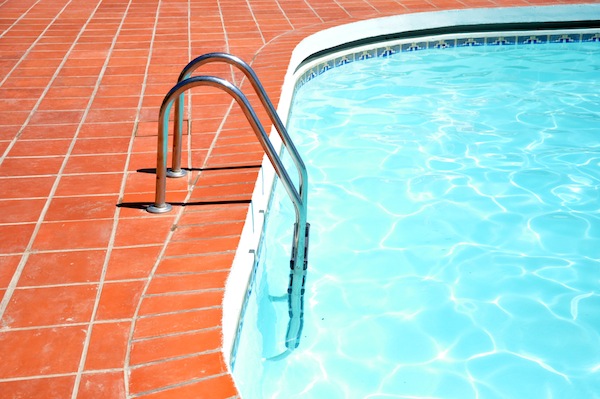 There are many types of winterizing chemicals out there that claim to help your pool get through the winter smoothly. It’s a good idea to do research or call your local pool supplies store to learn more about the options. Generally, these are algaecide to ensure algae does not grow in your pool.
There are many types of winterizing chemicals out there that claim to help your pool get through the winter smoothly. It’s a good idea to do research or call your local pool supplies store to learn more about the options. Generally, these are algaecide to ensure algae does not grow in your pool.
Remove and clean everything
You’ll want to completely remove the swimmer, ladder, chemical feeders, pool toys and any extraneous items.
Lower the water level
Next, lower the level of your water until it is below the skimmer and jets.
Blow out all water from the system
It’s essential to make sure your filtering system has no water in it whatsoever. By leaving water in the system, you can run the risk of causing some major damage if it freezes. To remove the water, use an air compressor to clean out the hoses. Then, plug up any openings so water can’t get in.
Cover the pool
Finally, you should put a cover over your pool to keep out any debris or dirt. It’s a good idea to put an air pillow in the middle, so there’s not as much pressure on the cover and walls of your pool. It also prevents water and debris from building up on the top. Make sure the cover is tight and put on correctly.
Quick and Easy Fall Landscaping Tips
Fall has arrived and it’s been raining here in New Jersey—perhaps a sign of things to come these next few months. While it’s really easy to neglect your yard and property during this wet and colder season, it’s especially important to keep tending to your yard and maintaining your landscape.
So to make things easier, we’ve created this quick guide of fall landscaping tips.
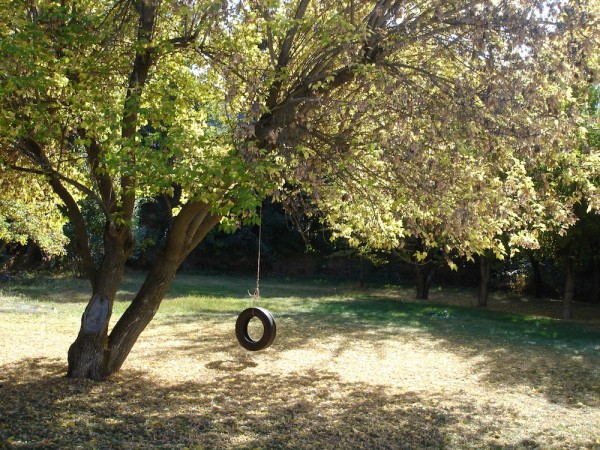
Remove those leaves
With the cold weather coming, trees are beginning to shed their leaves, and you know what that means: raking time! Most people absolutely dread raking leaves, but it’s extremely important. There are a few reasons why you should rake the leaves in the fall. One is that if you don’t, they’ll be on your lawn all winter and look terrible. The other reason is that your grass needs sunlight to remain healthy and prepare for the winter, but leaves tend to cover the grass and could harbor unwanted fungi.
Apply mulch
Fall is the perfect time for spreading mulch around your garden and trees. Make a compost pile from all the leaves you rake up and you can use your own homemade mulch to ensure your soil does not dry up or erode.
Bring in your gardening supplies
Everything from your water hose to your gardening spades should be brought inside for fall and winter. You don’t want to run the risk of losing something in the leaves or snow and having it rust.
Consider adding new plants
It may seem counterintuitive, but fall is actually a good time to plant new shrubs in your yard. There are more sales at nurseries this time of year and the ground is great for planting new things. The rain, as we’re getting right now, hydrates the plants, and the cooler weather does not put as much strain on the roots as the hot temperatures of summer.
Remove dead plants or dying limbs
Fall is also a time to really clean up your yard. That big fragile branch hovering over your car should be removed in the fall because once winter comes and the snow begins to pile up on the branch, it will snap and crush your car. Remove any weak branches or limbs from your property to avoid damage in winter.


